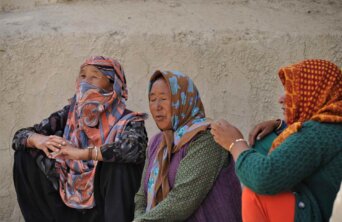- About
- Topics
- Picks
- Audio
- Story
- In-Depth
- Opinion
- News
- Donate
- Signup for our newsletterOur Editors' Best Picks.Send
Read, Debate: Engage.
| topic: | Political violence |
|---|---|
| located: | India |
| editor: | Hanan Zaffar |
The Indian central government moved in hundreds of paramilitary forces and army personnel into the northeastern state of Manipur as ethnic violence rocked the state. Even the Indian Air Force was called in to keep an eye on the situation as its aircrafts flew over the state capital. The central government has, to a great extent, taken over the security of the state and even appointed a former chief of paramilitary force as security advisor. This is as about 58 people have lost their lives and close to 30,000 have been displaced, with the existing setup appearing to fail at containing the violence.
The violence erupted after the Meitei, the dominant community in the state, demanded recognition by the Indian government as a Scheduled Tribe. Recognition as scheduled tribes provides a community with economic benefits and quotas in jobs and education. The Naga and Kuki tribes, which have already been recognised as such, have opposed the Meiteis’ demand, fearing that it would dilute their own benefits and opportunities.
For many years, the Meitei community, a mostly Hindu ethnic group that makes up roughly 50 percent of the state's population, has fought for recognition as a scheduled tribe, which would grant them access to a range of advantages like health, education and employment in the government.
The new violence appears to have been precipitated by protests last week, but there have been underlying tensions between the two sides for years over a variety of complex issues, such as land rights and a crackdown on minority groups.
The Metei hold the majority of elected office in the state and have therefore received greater economic and infrastructure development than other ethnic groups. While the Naga and Kuki communities reside primarily in agriculturally prosperous and geographically larger protected hill areas, they are more prevalent in the more developed but geographically smaller Imphal Valley.
The Naga and Kuki tribes are concerned that the change in status may cause them to gradually be evicted from a protected territory they have inhabited for many years, leaving them open to exploitation.
Additionally, since the tragic coup in neighbouring Myanmar in 2021, following which thousands of people of ethnic Chin fled the military's brutal repression, tensions in Manipur have risen. The Kuki, who belong to the same ethnic group as the Chins, claim that since their arrival, the government has unfairly repressed the group, leaving them with emotions of persecution and abandonment.
Separately, the state government began a campaign to evict tribal groups from forests in the highlands in February on the grounds that they had encroached on public territory, which infuriated the tribal population because they were being ejected from their homes.
The situation in Manipur is just one example of the deep-rooted tensions that exist between different communities in India. The country is home to a diverse range of ethnicities and cultural groups, each with its own unique rules, language and traditions. However, this diversity has often led to conflicts and tensions between different communities.
Ethnic violence has been a recurring problem in several parts of the country, including Assam, Nagaland, and Tripura. In these regions, conflicts between different ethnic groups have often been fueled by political and economic factors. For instance, in Assam, the issue of illegal immigration has been a significant source of tension between the indigenous Assamese population and Bengali-speaking immigrants.
The demand for recognition as a Scheduled Tribe is just one manifestation of the larger problem of discrimination and marginalisation that many communities in India face. As such it is important that provisions of reservation are extended to only those communities that have faced discrimination and are in true need of the benefits. While communities which have political power mainly due to the advantage of population should be kept away from this provision.
Image by Nomad Bikers

